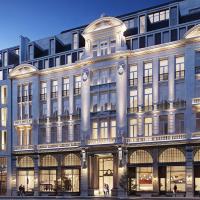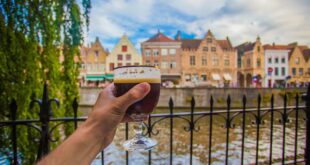[ad_1]
LONDON – Hotels in the Middle East reported negative 2018 performance results, while hotels in Africa posted total-year growth across the three key performance metrics, according to data from STR.
U.S. dollar constant currency, 2018 vs. 2017
Middle East
- Occupancy: -0.5% to 64.6%
- Average daily rate (ADR): -5.2% to US$155.45
- Revenue per available room (RevPAR): -5.7% to US$100.45
Africa
- Occupancy: +4.7% to 60.6%
- Average daily rate (ADR): +7.1% to US$118.31
- Revenue per available room (RevPAR): +12.1% to US$71.74
Among subcontinents in the region, Northern Africa posted the largest 2018 increases in each of the three key performance metrics: occupancy (+11.8% to 61.1%), ADR (+13.8% to US$96.81) and RevPAR (+27.2% to US$59.18). Within Northern Africa, Egypt, Morocco and Tunisia each recorded double-digit RevPAR growth for the year.
Local currency, 2018 vs. 2017
Cairo & Giza, Egypt
- Occupancy: +11.0% to 72.5%
- ADR: +10.8% to EGP1,713.35
- RevPAR: +23.1% to EGP1,242.20
According to STR analysts, the submarket’s 10.5% rise in demand (room nights sold) was mostly a result of tourism recovery, improved security protocols, resumed flights with Russia, and marketing campaigns. ADR growth was helped by the combination of increased guest demand and competitive pricing due to the devaluation of the Egyptian Pound. Overall, the absolute occupancy level was the highest for Cairo & Giza since 2008, while the ADR value was the highest STR has ever benchmarked for the submarket.
Doha, Qatar
- Occupancy: +10.1% to 60.8%
- ADR: -18.8% to QAR269.46
- RevPAR: -10.6% to QAR163.86
STR analysts cite tourism recovery which was helped by a shift to alternative source markets and fast-tracked reforms stemming from Qatar’s National Tourism Sector Strategy 2030 as reasons behind a 14.3% jump in demand. The 60.8% absolute occupancy level was still low compared to recent years, but year-over-year growth was pronounced because 2017 was such a low demand year affected by the blockade imposed on the country. ADR, on the other hand, continued to decline in 2018 as hoteliers looked to maintain market share with an influx of new supply entering the country.
Europe 2018 hotel performance
Europe’s hotel industry reported positive results in the three key performance metrics during 2018, according to data from STR.
Euro constant currency, 2018 vs. 2017
Europe
- Occupancy: +1.2% to 72.4%
- Average daily rate (ADR): +3.9% to EUR112.49
- Revenue per available room (RevPAR): +5.2% to EUR81.43
Local currency, 2018 vs. 2017
Dublin
- Occupancy: +0.7% to 83.8%
- ADR: +6.5% to EUR145.15
- RevPAR: +7.2% to EUR121.70
The absolute occupancy level was the highest for any year in STR’s Dublin database. The market has also seen eight consecutive years of RevPAR growth. STR analysts attribute the strong performance to a large number of events held during the year: the St. Patrick’s Festival (17-19 March), the Six Nations Rugby Championship, the EORTC-NCI-AACR Symposium (13-16 November) and a number of concerts (U2, Florence + the Machine and Snow Patrol).
Brussels
- Occupancy: +6.9% to 72.9%
- ADR: +5.2% to EUR115.50
- RevPAR: +12.4% to EUR84.17
Brussels registered another double-digit RevPAR growth year after the negative impact of the terror attacks of 2016. The market’s absolute occupancy level was the highest for any year in STR’s Brussels database, and the market has seen 26 consecutive months of year-over-year occupancy growth. According to Tourism Economics, Belgium welcomed roughly 9 million visitors in 2018, and this is expected to continue. STR analysts note that inbound tourism will continue to drive demand and push hotel performance levels.
[ad_2]You can read more of the news on source
 Travelsmart
Travelsmart



